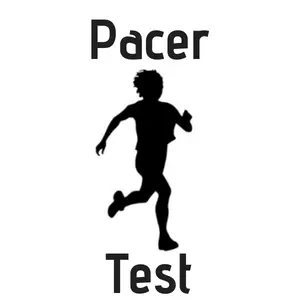The Fitnessgram Pacer Test

P.A.C.E.R, which stands for Progressive Aerobic Cardiovascular Endurance Run, is a shuttle run program with multiple steps that was created in 1982 by Leger and Lambert to help measure the performance, endurance, and fitness of students. The objective of the PACER is to keep a designated pace while running as long as possible. The idea behind this is that participants sprint (back and forth) across a space that is 20 meters in distance at a pace that increases each minute that they are running. The PACER is a more effective and more fun way to measure the aerobic capacity of students that is inclusive, easy to administer, and easy to score.
Audio Intro: “The FitnessGram Pacer Test is a multistage aerobic capacity test that progressively gets more difficult as it continues. The 20 meter pacer test will begin in 30 seconds. Line up at the start. The running speed starts slowly, but gets faster each minute after you hear this signal. [beep] A single lap should be completed each time you hear this sound. [ding] Remember to run in a straight line, and run as long as possible. The second time you fail to complete a lap before the sound, your test is over. The test will begin on the word start. On your mark, get ready, start.”
Pacer Procedure
Step 1: Mark the course with tape and cones; make sure each of the lanes are evenly divided.
Step 2: Prepare enough of the copies of either the individual score sheets or the group administration score sheet.
Step 3: Present and explain the instructions to the students, making sure they all understand how PACER is done.
Step 4: Assemble the first group at the START line.
Step 5: Play the included Audio. When the word “start” is said, the test starts and students run the 20-meter course. Walking is allowed as long as they maintain the designated pace.
Step 6: Students should run the course from the START line to the END line, a distance of 20 meters, with their foot touching the END line before the BEEP plays on the provided audio.
Step 7: When the BEEP is heard, students will turn around and run to the opposite side of the course. If a student reaches the line before they hear the BEEP, they have to wait at the line to run to the other side; they can’t go until they hear the BEEP.
Step 8: The TRIPLE BEEP is used to announce the pace changing after the completion of each minute. When students hear the TRIPLE BEEP, they are to turn around and run to the opposite end, regardless of whether they’re at the line or not.
Step 9: The students will continue PACER until the entire test has been completed or they have had two misses. Misses occur when students don’t reach either the START or END line by the time the BEEP is heard. Once a student has missed twice, they have completed the PACER.
Step 10: Most importantly, remember to thank the students for their cooperation and participation and congratulate them on a job well-done. Instruct them to continue to walk and to stretch properly in the cool-down area once they’re done.
[player id=27363]
When to Stop the Pacer
You should end the PACER for each student once they have missed twice. These misses do not have to be consecutive. If a student remains on the same side for the duration of two beeps, the test is complete for them.
Important Points to Cover When Teaching The Pacer Test
- Make it clear that the PACER is not a race.
- Instruct students that they have to turn around when a BEEP is heard, regardless of whether it’s a single BEEP or a TRIPLE BEEP.
- Make sure the difference between the single BEEP and TRIPLE BEEP is clear.
- Remind students that they have to wait at the line if they reach if before the BEEP.
- Make sure it’s clear that if they don’t make it to the line before the BEEP a second time, they’ll need to go to the cool down area.
- It could be useful to play the Audio once in its entirety for the students before they take part in the PACER so they can familiarize themselves with the sounds.

